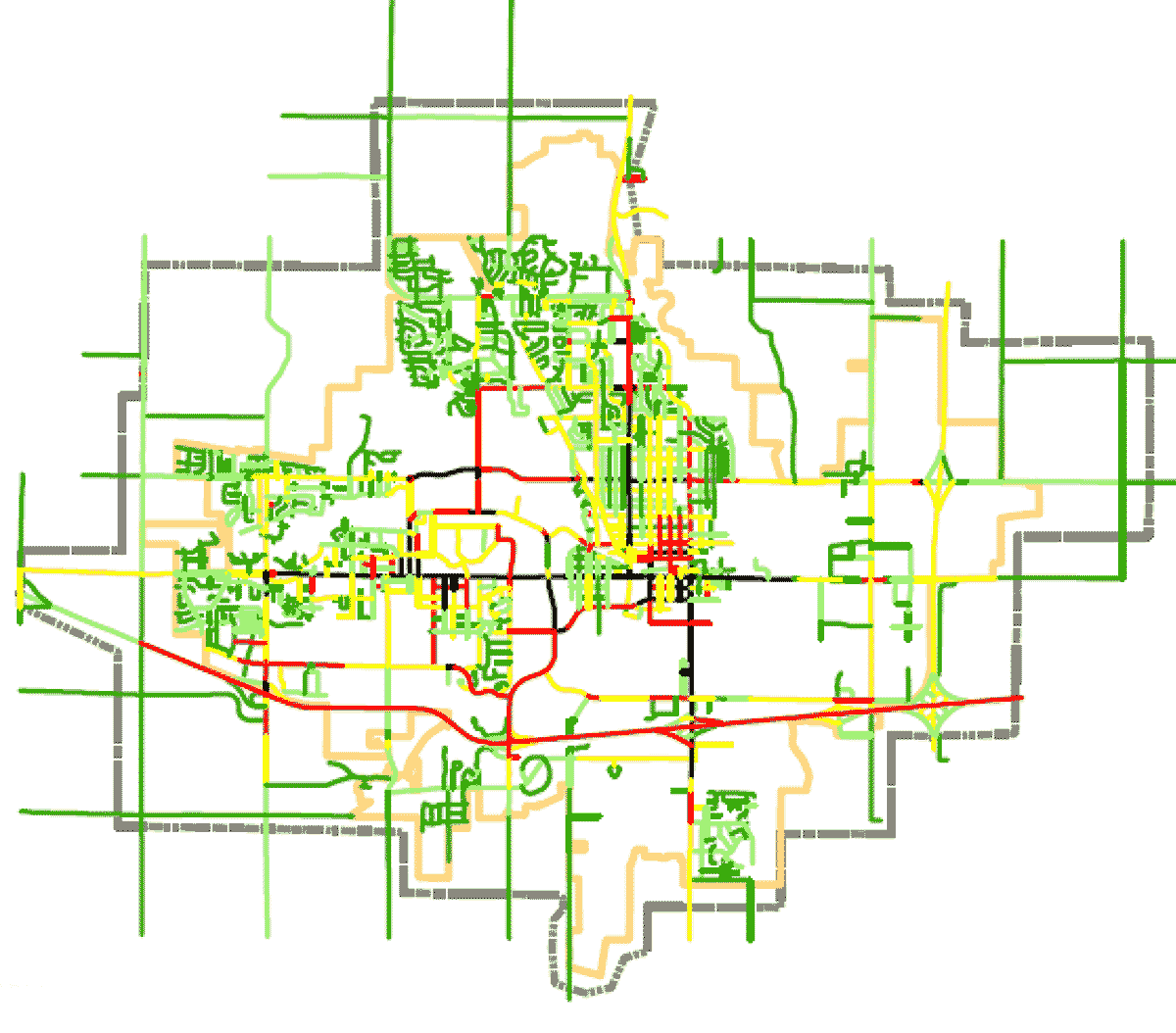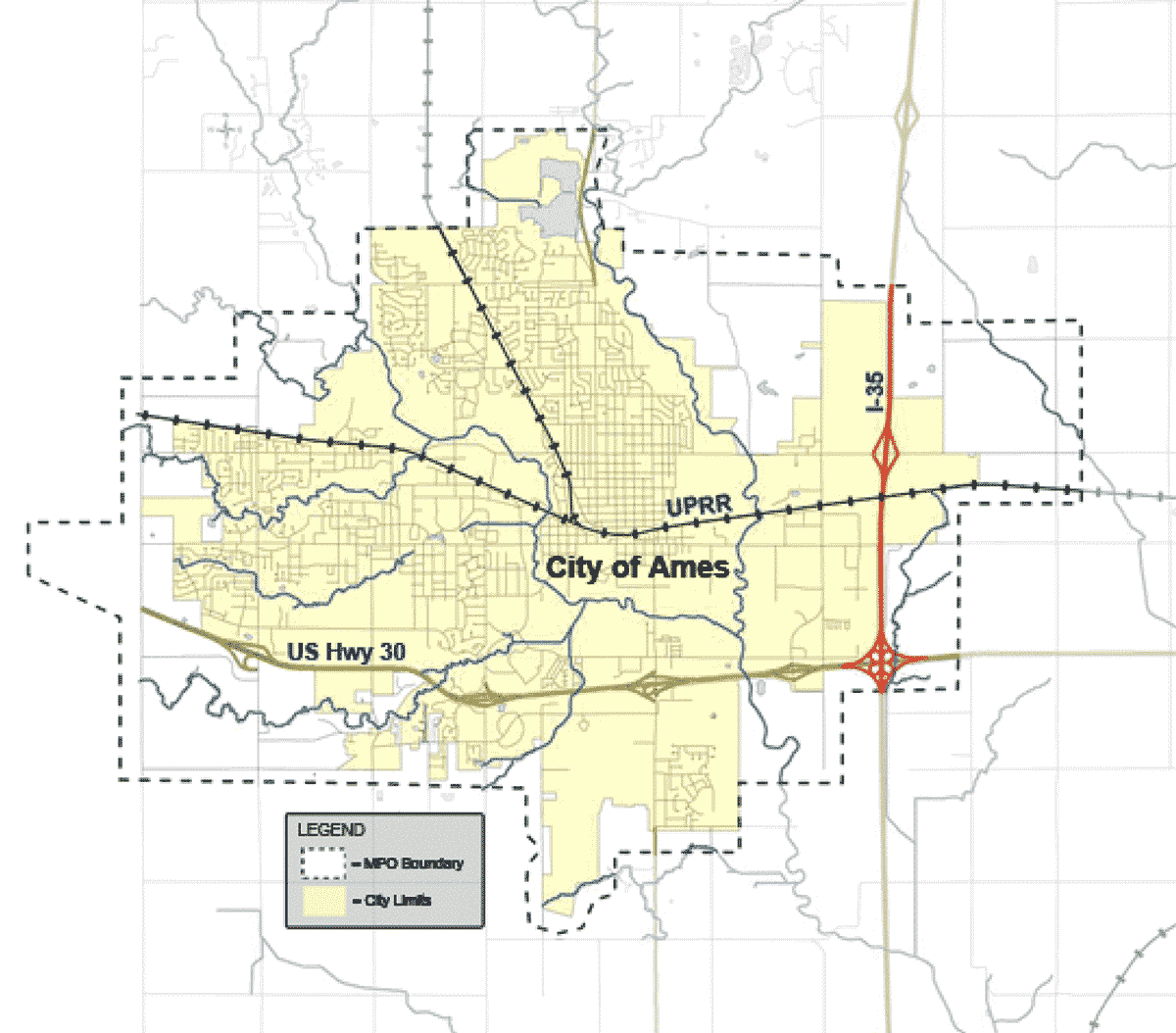Researchers
Reginald Souleyrette
Konstantina Gkritza
About the research
The consideration of safety in metropolitan planning is a requirement of the Federal Highway legislation (SAFETEA-LU). No specific guidance has yet been provided to MPOs on how safety should be considered (qualitatively or quantitatively), nor where or at what level it should be considered (project, corridor or regionwide). The lack of guidance is particularly challenging to small planning agencies. In recent years, several safety analysis techniques have been developed that may be applicable to explicitly incorporate safety objectives in the planning process. This project proposes to investigate road assessment program and risk mapping strategies that may be applicable to small area metropolitan safety planning.
Funding Sources:
City of Ames ($70,000.00)
Iowa Department of Transportation
Midwest Transportation Consortium ($25,089.00)
Total: $95,089.00
Researchers
Konstantina Gkritza
Reginald Souleyrette
About the research
The historically-reactive approach to identifying safety problems and mitigating them involves selecting black spots or hot spots by ranking locations based on crash frequency and severity. The approach focuses mainly on the corridor level without taking the exposure rate (vehicle miles traveled) and socio-demographics information of the study area, which are very important in the transportation planning process, into consideration. A larger study analysis unit at the Transportation Analysis Zone (TAZ) level or the network planning level should be used to address the needs of development of the community in the future and incorporate safety into the long-range transportation planning process.
In this study, existing planning tools (such as the PLANSAFE models presented in NCHRP Report 546) were evaluated for forecasting safety in small and medium-sized communities, particularly as related to changes in socio-demographics characteristics, traffic demand, road network, and countermeasures. The research also evaluated the applicability of the Empirical Bayes (EB) method to network-level analysis. In addition, application of the United States Road Assessment Program (usRAP) protocols at the local urban road network level was investigated.
This research evaluated the applicability of these three methods for the City of Ames, Iowa. The outcome of this research is a systematic process and framework for considering road safety issues explicitly in the small and medium-sized community transportation planning process and for quantifying the safety impacts of new developments and policy programs. More specifically, quantitative safety may be incorporated into the planning process, through effective visualization and increased awareness of safety issues (usRAP), the identification of high-risk locations with potential for improvement, (usRAP maps and EB), countermeasures for high-risk locations (EB before and after study and PLANSAFE), and socio-economic and demographic induced changes at the planning-level (PLANSAFE).
Project Details
Ames Power Plant
BMG Biosolids
Cedar Rapids Water Department
City of Ames, Iowa
Des Moines Water Works
Iowa Department of Transportation
Iowa Highway Research Board
Kelderman Lime
Newton Water Works
Story County Engineer
West Des Moines Water Works
Researchers
Hans van Leeuwen
David White
Rob Baker
About the research
Lime sludge, an inert material mostly composed of calcium carbonate, is the result of softening hard water for distribution as drinking water. A large city such as Des Moines, Iowa, produces about 30,700 tons of lime sludge (dry weight basis) annually (Jones et al., 2005). Eight Iowa cities representing, according to the U.S. Census Bureau, 23% of the state?s population of 3 million, were surveyed. They estimated that they collectively produce 64,470 tons of lime sludge (dry weight basis) per year, and they currently have 371,800 tons (dry weight basis) stockpiled. Recently, the Iowa Department of Natural Resources directed those cities using lime softening in drinking water treatment to stop digging new lagoons to dispose of lime sludge. Five Iowa cities with stockpiles of lime sludge funded this research. The research goal was to find useful and economical alternatives for the use of lime sludge. Feasibility studies tested the efficacy of using lime sludge in cement production, power plant SOx treatment, dust control on gravel roads, wastewater neutralization, and in-fill materials for road construction. Applications using lime sludge in cement production, power plant Sox treatment, and wastewater neutralization, and as a fill material for road construction showed positive results, but the dust control application did not.
Since the fill material application showed the most promise in accomplishing the project?s goal within the time limits of this research project, it was chosen for further investigation. Lime sludge is classified as inorganic silt with low plasticity. Since it only has an unconfined compressive strength of approximately 110 kPa, mixtures with fly ash and cement were developed to obtain higher strengths. When fly ash was added at a rate of 50% of the dry weight of the lime sludge, the unconfined strength increased to 1600 kPa. Further, friction angles and California Bearing Ratios were higher than those published for soils of the same classification. However, the mixtures do not perform well in durability tests. The mixtures tested did not survive 12 cycles of freezing and thawing and wetting and drying without excessive mass and volume loss. Thus, these mixtures must be placed at depths below the freezing line in the soil profile. The results demonstrated that chemically stabilized lime sludge is able to contribute bulk volume to embankments in road construction projects.


